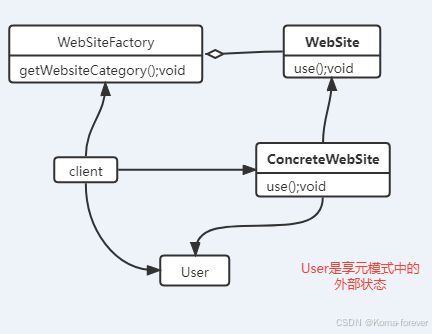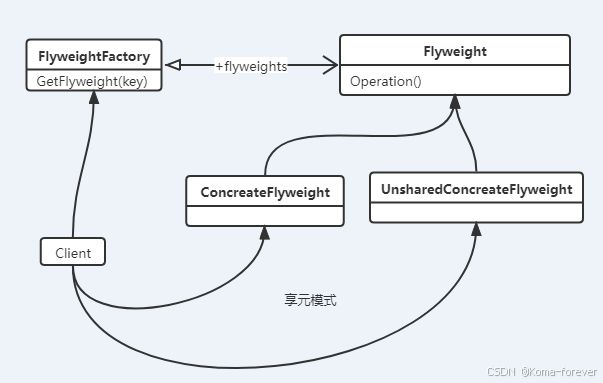- Spring Boot 实现主表+明细表 Excel 导出(EasyPOI 实战)
全干engineer
javaspringbootexcel后端javaEasyPOIexcel导出
本文基于SpringBoot+MyBatis-Plus+EasyPOI实现多个业务模块)的主表带明细表导出Excel功能,涵盖多条件筛选、主表明细组装、批量导出,附详细示例与优化建议。文章目录前言一、EasyPOI简介常见JavaExcel读写方案对比为什么选择EasyPOI?二、使用步骤1.pom文件导入相关依赖2.实体类加上配置注解@Excel(name=XXX)3.Controller导出接
- 领域驱动设计(Domain-Driven Design DDD)——模型驱动设计的构造块1
阿波罗.2012
软件架构系统架构架构设计模式软件构建
一、概述为了保证软件实现简洁且与模型保持一致,不管实际情况如何复杂,必须运用建模和设计的最佳实践,即设计模式GoF等。领域驱动设计能够使模型和程序紧密结合一起,互相促进对方的效用。这种结合要求我们注意每个设计的细节。这种设计风格沿续了“职责驱动设计”的原则,也用利了其他面向对象的设计原则如“SOLID”原则等为了使领域驱动设计过程更加灵活,开发人员需理解上述原则是如何支持Model-DrivenD
- 理解WebGL中的顶点着色器和片元着色器
程序猿全栈の董(董翔)
webgl着色器
WebGL是一种基于OpenGLES的JavaScriptAPI,它允许我们在网页上直接渲染3D图形而无需任何插件。WebGL的核心是着色器编程,它主要包含两种着色器:顶点着色器(VertexShader)和片元着色器(FragmentShader)。顶点着色器负责处理每个顶点的位置,它决定了顶点在屏幕上的最终位置。而片元着色器则负责计算每个像素的颜色值。这两个着色器共同工作,构成了WebGL渲染
- 滴滴Android开发面试题及参考答案
大模型大数据攻城狮
面试大厂校招大厂八股文jvm原理进程通信进程线程ANR
说一下抽象类和接口的区别?抽象类和接口可以有方法体吗?Java可以多实现或者多继承吗?抽象类和接口的区别:语法层面:抽象类使用abstract关键字修饰,其中可以包含抽象方法和非抽象方法;接口使用interface关键字定义,其方法默认都是抽象的,JDK8开始可以有默认方法和静态方法。实现方式:一个类只能继承一个抽象类,通过extends关键字;而一个类可以实现多个接口,使用implements关
- JUnit注解,枚举
一、JUnit注解(Annotations)JUnit是Java中用于编写和运行单元测试的框架。JUnit提供了许多注解,用于控制测试的执行顺序、测试生命周期、断言结果等。以下是一些常用的JUnit注解及其作用:1.@Test用于标记一个方法是测试方法。@TestpublicvoidtestAddition(){intresult=1+1;assertEquals(2,result);//断言结果
- 学习java基础:java开发常用技术
molihuaya
学习javajava开发技术
基础部分1.线程和进程的区别线程三个基本状态:就绪、执行、阻塞线程五个基本操作:创建、就绪、运行、阻塞、终止进程四种形式:主从式、会话式、消息或邮箱机制、共享存储区方式进程是具有一定功能的程序关于某次数据集合上的一次运行活动,是系统进行资源分配和调度的一个独立单位。一个进程包含多个线程。线程是进程的一个实体,是CPU调度和分配的基本单元。2.JSP四大域对象和九大内置对象四大域对象:PageCon
- java——Junit单元测试、反射、注解
放牛娃@搞IT
javajunit单元测试
publicclassCalculator{/***加法*@parama*@paramb*@return*/publicintadd(inta,intb){//inti=3/0;returna-b;}/***减法*@parama*@paramb*@return*/publicintsub(inta,intb){returna-b;}}publicclassCalculatorTest{public
- JavaSE查漏补缺:Junit_反射_注解摘要
Kenny_Xu_00101854
Javajava反射单元测试
文章目录Part1Junit单元测试Part2反射-框架设计的灵魂Part3Java注解Part1Junit单元测试测试分类黑盒测试:不需要写代码,给输入值,看程序能否输出期望的值白盒测试:需要写代码,关注程序具体的执行流程Junit的使用(白盒测试)步骤:定义一个测试类(测试用例)规范:测试类名是被测试类名+Test包名:xxx.xxx.xx.test定义测试方法:可独立运行规范:方法名:tes
- ReentrantLock-signal()唤醒失败原因
summerkissyou1987
java
以下是Java中signal()唤醒失败的常见原因及解决方案分析:一、核心原因锁未正确持有调用signal()的线程必须持有与Condition关联的锁,否则抛出IllegalMonitorStateException错误示例:未调用lock()直接执行condition.signal()等待线程未进入等待状态目标线程未执行await()时调用signal()会导致信号丢失时序问题:signal(
- TypeScript基本类型
一、前言TypeScript是JavaScript的一个超集,它通过添加静态类型系统帮助开发者写出更健壮、可维护性更强的代码。而理解TypeScript的基本类型是学习TypeScript的第一步。本文将带你全面了解TypeScript中的常用基本类型,包括:✅数值类型✅字符串类型✅布尔类型✅null与undefined✅any与unknown✅never与void✅数组类型✅元组类型并通过大量代
- RocketMQ 5.x 架构与端口差异、Java客户端代码示例及修改 RocketMQ Proxy 默认端口
RocketMQ5.x端口差异及代码解释端口差异的原因在RocketMQ5.x版本中,端口使用与之前版本不同,主要原因如下:架构变化:RocketMQ5.x引入了新的Proxy模块,作为客户端与Broker之间的中间层默认端口:4.x版本:NameServer默认端口9876,Broker默认端口109115.x版本:Proxy默认端口8080/8081分离设计:5.x将路由发现与消息传输分离,客
- Hadoop入门案例WordCount
码喵喵
hadoopmapreduce大数据
wordcount可以说是hadoop的入门案例,也是基础案例主要体现思想就是mapreduce核心思想原始文件为hadoop.txt,内容如下:hello,javahello,java,linux,hadoophadoop,java,linuxhello,java,linuxlinux,c,javac,php,java在整个文件中单词所出现的次数Hadoop思维:Mapreduce-----》M
- 【设计模式08】桥接器
鼠鼠我呀2
设计模式设计模式java开发语言
前言适用于同业务域下多个维度,每个维度多个方法的情况。比如点咖啡业务域,咖啡有容量和风味两个维度,容量分为大中小,风味有拿铁,卡布奇诺。普通写法会写大杯拿铁,大杯卡布奇诺,。。。,总共要写nxm个类,类爆炸了桥接器将两个维度解耦,通过关联来桥接,类的数量可以将为n+m个UML类图代码示例取数场景,维度一:对象类型,用户维度、订单维度、稿件维度维度二:指标类型,访问量,点击率packagecom.s
- 【设计模式09】组合模式
鼠鼠我呀2
设计模式设计模式组合模式
前言适用于树形结构,如公司的组织架构,目录和文件夹UML类图代码示例packagecom.sw.learn.pattern.C_structre.c_composite;importorg.springframework.beans.factory.annotation.Autowired;importorg.springframework.stereotype.Component;importj
- 【设计模式04】单例模式
鼠鼠我呀2
设计模式设计模式单例模式
前言整个系统中只会出现要给实例,比如Spring中的Bean基本都是单例的UML类图无代码示例packagecom.sw.learn.pattern.B_create.c_singleton;publicclassMain{publicstaticvoidmain(String[]args){//doublechecklocking线程安全+懒加载⭐️//SingletonDCLinstance=
- 深入理解观察者模式及其JavaScript实现
布兰妮甜
javascript观察者模式网络
Hi,我是布兰妮甜!观察者模式(ObserverPattern)是一种行为设计模式,它定义了对象之间的一对多依赖关系,当一个对象的状态发生改变时,所有依赖于它的对象都会得到通知并自动更新。这种模式在事件处理系统、数据绑定和发布-订阅系统中广泛应用。文章目录一、观察者模式的核心概念二、观察者模式的优点三、JavaScript实现观察者模式1.基本实现2.更实用的例子-天气预报系统3.使用函数作为观察
- 发布/订阅模式:解耦系统的强大设计模式
布兰妮甜
javascript设计模式发布/订阅模式前端
Hi,我是布兰妮甜!发布/订阅模式(Publish/SubscribePattern,简称Pub/Sub)是一种消息传递模式,它允许发送者(发布者)将消息发送给多个接收者(订阅者),而无需知道这些接收者的具体信息。这种模式在现代软件开发中广泛应用,特别是在需要松耦合组件通信的场景中。文章目录一、发布/订阅模式概述二、发布/订阅模式的实现方式2.1简单的事件发射器实现2.2更复杂的主题订阅实现三、发
- MVC与MVVM架构模式详解:原理、区别与JavaScript实现
布兰妮甜
javascriptmvcmvvm架构
Hi,我是布兰妮甜!在当今复杂的前端开发领域,如何组织代码结构一直是开发者面临的核心挑战。MVC和MVVM作为两种经典的架构模式,为前端应用提供了清晰的责任划分和可维护的代码组织方案。本文将深入探讨这两种模式的原理、实现差异以及在实际项目中的应用场景,通过JavaScript代码示例展示它们的核心思想,帮助开发者理解如何根据项目需求选择合适的架构模式。文章目录一、架构模式概述二、MVC架构模式2.
- 八股文——JAVA基础:什么是反射?反射的优点和缺点都有哪些?反射的原理是什么?
Hellyc
java开发语言
简单来说,反射是一种可以让jvm在动态运行时拿到类的信息的一种方法。在编程时可以通过类对象来获取该类中基本信息,包括类方法、继承关系等。反射的优点在于使得代码的编写更加灵活,比如配置文件的加载,只需要在配置文件中进行修改,而不需要修改代码。反射的最大优势就在于反射是框架编写的基石,比如使用的spring框架、AOP面向切面编程等都是使用到了反射。缺点在于安全性不足,因为使用反射可以绕过java的语
- 八股文——JAVA基础:常量折叠是什么?
Hellyc
java开发语言
常量折叠是jvm在底层进行常量的基本运算,比如Strings="hello"+"world";//编译时直接折成"helloworld"再比如:publicclassC{publicstaticfinalStringA="he";publicstaticfinalStringB="llo";publicstaticfinalStringC=A+B;//也会在编译时折成"hello"}而String
- 【设计模式05】原型模式
鼠鼠我呀2
设计模式设计模式原型模式
前言通过clone来实例化对象,适用于复杂大对象的创建,一般用不着UML类图无代码示例packagecom.sw.learn.pattern.B_create.d_prototype;importjava.lang.reflect.Array;importjava.util.*;importjava.util.Scanner;publicclassMain{/***广告主可以在页面上复制已有订单模
- JAVA八股文:异常有哪些种类,可以举几个例子吗?Throwable类有哪些常见方法?
Hellyc
java开发语言
Throwable、Error与Exception所有的异常类型都继承自java.lang.Throwable。其中Error(比如OutOfMemoryError、StackOverflowError、类加载失败等)表示JVM自身或运行环境的问题,不应该也通常无法由应用程序去捕获或恢复,出现Error通常意味着程序无法继续安全运行。Exception则代表应用层“可感知”的问题。CheckedE
- Github 2025-07-03Go开源项目日报Top10
老孙正经胡说
github开源Github趋势分析开源项目PythonGolang
根据GithubTrendings的统计,今日(2025-07-03统计)共有10个项目上榜。根据开发语言中项目的数量,汇总情况如下:开发语言项目数量Go项目10JavaScript项目2Go编程语言:构建简单、可靠和高效的软件创建周期:3474天开发语言:Go协议类型:BSD3-Clause“New”or“Revised”LicenseStar数量:117964个Fork数量:16989次关注人
- Github 2025-07-01 开源项目月报 Top16
根据GithubTrendings的统计,本月(2025-07-01统计)共有16个项目上榜。根据开发语言中项目的数量,汇总情况如下:开发语言项目数量TypeScript项目5JupyterNotebook项目4Python项目4Rust项目2JavaScript项目1非开发语言项目1Shell项目1Dockerfile项目1Java项目1C++项目1Vue项目1各种有趣主题的精彩清单创建周期:3
- JDK 25 功能预览:Java 生态的重大升级
深盾科技
java开发语言
JDK25计划于2025年9月发布,作为长期支持版本(LTS),它将为Java生态带来多项重要的语言增强、性能优化、安全改进以及体验优化,以下是对JDK25主要预期功能的详细介绍。一、语言特性增强1.基本类型模式匹配(JEP507)在Java的模式匹配框架instanceof和switch中,现在可以直接支持原始类型(如int、boolean)。这一特性使得表达式更加简洁,减少了样板代码。示例代码
- Web 服务器架构选择深度解析
后端
在Web服务与API设计中,服务器架构的选择直接决定系统的可扩展性、维护成本与性能上限。本文从架构演进脉络出发,系统解析单体架构、微服务、服务网格、Serverless等主流架构的核心特性、适用场景及Java技术栈实现。一、架构演进与核心分类1.1架构演进脉络1.2核心架构对比表架构类型核心特点典型技术栈(Java)部署复杂度扩展性单体架构所有功能模块打包为单一应用,共享数据库SpringBoot
- 10倍速开发!飞算JavaAI实战:5分钟生成SpringCloud完整工程
LCG元
工具Python深度学习人工智能springcloudspring后端
目录一、颠覆性架构设计二、5分钟生成实战步骤1:定义服务架构(YAML配置)步骤2:执行AI生成命令(Python驱动)步骤3:验证生成结果(终端操作)三、双流程图解析横向对比:传统开发vsAI生成纵向核心流程四、量化性能对比五、生产级部署方案安全审计实现高可用部署架构六、技术前瞻性分析七、附录:完整技术图谱传统SpringCloud工程搭建平均耗时8小时,而使用飞算JavaAI只需5分钟,开发效
- 对象的finalization机制Test
ThetaarSofVenice
jvmjava开发语言
Java语言提供了对象终止(finalization)机制来允许开发人员自定义对象被销毁之前的处理逻辑。当垃圾回收器发现没有引用指向一个对象时,通常接下来要做的就是垃圾回收,即清除该对象,而finalization机制使得在清除此对象之前,总会先调用这个对象的finalize()方法。finalize()方法允许在子类中被重写,用于在对象被回收时进行资源释放或清理相关内存,例如关闭文件、套接字和数
- 基于Vue.js的图书管理系统前端界面设计的javascript逻辑部分
前文,我们实现了一个使用Vue3构建的图书管理系统的html部分,接下来我们看一下JavaScript逻辑部分。html部分以及整个系统的完整代码可以查看我的文章:基于Vue.js的图书管理系统前端界面设计-CSDN博客一、Vue3简介Vue3是渐进式JavaScript框架Vue.js的第三个主要版本,它延续了Vue易于上手、灵活性高和高效的特点,并在性能、可维护性和开发体验上进行了显著提升。(
- LeetCode 热题 100 - 贪心算法 - 买卖股票的最佳时机 - javascript
Jxxli
LeetCodehot100leetcode算法贪心算法javascript
题目给定一个数组prices,它的第i个元素prices[i]表示一支给定股票第i天的价格。你只能选择某一天买入这只股票,并选择在未来的某一个不同的日子卖出该股票。设计一个算法来计算你所能获取的最大利润。返回你可以从这笔交易中获取的最大利润。如果你不能获取任何利润,返回0。示例1:输入:[7,1,5,3,6,4]输出:5解释:在第2天(股票价格=1)的时候买入,在第5天(股票价格=6)的时候卖出,
- tomcat基础与部署发布
暗黑小菠萝
Tomcat java web
从51cto搬家了,以后会更新在这里方便自己查看。
做项目一直用tomcat,都是配置到eclipse中使用,这几天有时间整理一下使用心得,有一些自己配置遇到的细节问题。
Tomcat:一个Servlets和JSP页面的容器,以提供网站服务。
一、Tomcat安装
安装方式:①运行.exe安装包
&n
- 网站架构发展的过程
ayaoxinchao
数据库应用服务器网站架构
1.初始阶段网站架构:应用程序、数据库、文件等资源在同一个服务器上
2.应用服务和数据服务分离:应用服务器、数据库服务器、文件服务器
3.使用缓存改善网站性能:为应用服务器提供本地缓存,但受限于应用服务器的内存容量,可以使用专门的缓存服务器,提供分布式缓存服务器架构
4.使用应用服务器集群改善网站的并发处理能力:使用负载均衡调度服务器,将来自客户端浏览器的访问请求分发到应用服务器集群中的任何
- [信息与安全]数据库的备份问题
comsci
数据库
如果你们建设的信息系统是采用中心-分支的模式,那么这里有一个问题
如果你的数据来自中心数据库,那么中心数据库如果出现故障,你的分支机构的数据如何保证安全呢?
是否应该在这种信息系统结构的基础上进行改造,容许分支机构的信息系统也备份一个中心数据库的文件呢?
&n
- 使用maven tomcat plugin插件debug关联源代码
商人shang
mavendebug查看源码tomcat-plugin
*首先需要配置好'''maven-tomcat7-plugin''',参见[[Maven开发Web项目]]的'''Tomcat'''部分。
*配置好后,在[[Eclipse]]中打开'''Debug Configurations'''界面,在'''Maven Build'''项下新建当前工程的调试。在'''Main'''选项卡中点击'''Browse Workspace...'''选择需要开发的
- 大访问量高并发
oloz
大访问量高并发
大访问量高并发的网站主要压力还是在于数据库的操作上,尽量避免频繁的请求数据库。下面简
要列出几点解决方案:
01、优化你的代码和查询语句,合理使用索引
02、使用缓存技术例如memcache、ecache将不经常变化的数据放入缓存之中
03、采用服务器集群、负载均衡分担大访问量高并发压力
04、数据读写分离
05、合理选用框架,合理架构(推荐分布式架构)。
- cache 服务器
小猪猪08
cache
Cache 即高速缓存.那么cache是怎么样提高系统性能与运行速度呢?是不是在任何情况下用cache都能提高性能?是不是cache用的越多就越好呢?我在近期开发的项目中有所体会,写下来当作总结也希望能跟大家一起探讨探讨,有错误的地方希望大家批评指正。
1.Cache 是怎么样工作的?
Cache 是分配在服务器上
- mysql存储过程
香水浓
mysql
Description:插入大量测试数据
use xmpl;
drop procedure if exists mockup_test_data_sp;
create procedure mockup_test_data_sp(
in number_of_records int
)
begin
declare cnt int;
declare name varch
- CSS的class、id、css文件名的常用命名规则
agevs
JavaScriptUI框架Ajaxcss
CSS的class、id、css文件名的常用命名规则
(一)常用的CSS命名规则
头:header
内容:content/container
尾:footer
导航:nav
侧栏:sidebar
栏目:column
页面外围控制整体布局宽度:wrapper
左右中:left right
- 全局数据源
AILIKES
javatomcatmysqljdbcJNDI
实验目的:为了研究两个项目同时访问一个全局数据源的时候是创建了一个数据源对象,还是创建了两个数据源对象。
1:将diuid和mysql驱动包(druid-1.0.2.jar和mysql-connector-java-5.1.15.jar)copy至%TOMCAT_HOME%/lib下;2:配置数据源,将JNDI在%TOMCAT_HOME%/conf/context.xml中配置好,格式如下:&l
- MYSQL的随机查询的实现方法
baalwolf
mysql
MYSQL的随机抽取实现方法。举个例子,要从tablename表中随机提取一条记录,大家一般的写法就是:SELECT * FROM tablename ORDER BY RAND() LIMIT 1。但是,后来我查了一下MYSQL的官方手册,里面针对RAND()的提示大概意思就是,在ORDER BY从句里面不能使用RAND()函数,因为这样会导致数据列被多次扫描。但是在MYSQL 3.23版本中,
- JAVA的getBytes()方法
bijian1013
javaeclipseunixOS
在Java中,String的getBytes()方法是得到一个操作系统默认的编码格式的字节数组。这个表示在不同OS下,返回的东西不一样!
String.getBytes(String decode)方法会根据指定的decode编码返回某字符串在该编码下的byte数组表示,如:
byte[] b_gbk = "
- AngularJS中操作Cookies
bijian1013
JavaScriptAngularJSCookies
如果你的应用足够大、足够复杂,那么你很快就会遇到这样一咱种情况:你需要在客户端存储一些状态信息,这些状态信息是跨session(会话)的。你可能还记得利用document.cookie接口直接操作纯文本cookie的痛苦经历。
幸运的是,这种方式已经一去不复返了,在所有现代浏览器中几乎
- [Maven学习笔记五]Maven聚合和继承特性
bit1129
maven
Maven聚合
在实际的项目中,一个项目通常会划分为多个模块,为了说明问题,以用户登陆这个小web应用为例。通常一个web应用分为三个模块:
1. 模型和数据持久化层user-core,
2. 业务逻辑层user-service以
3. web展现层user-web,
user-service依赖于user-core
user-web依赖于user-core和use
- 【JVM七】JVM知识点总结
bit1129
jvm
1. JVM运行模式
1.1 JVM运行时分为-server和-client两种模式,在32位机器上只有client模式的JVM。通常,64位的JVM默认都是使用server模式,因为server模式的JVM虽然启动慢点,但是,在运行过程,JVM会尽可能的进行优化
1.2 JVM分为三种字节码解释执行方式:mixed mode, interpret mode以及compiler
- linux下查看nginx、apache、mysql、php的编译参数
ronin47
在linux平台下的应用,最流行的莫过于nginx、apache、mysql、php几个。而这几个常用的应用,在手工编译完以后,在其他一些情况下(如:新增模块),往往想要查看当初都使用了那些参数进行的编译。这时候就可以利用以下方法查看。
1、nginx
[root@361way ~]# /App/nginx/sbin/nginx -V
nginx: nginx version: nginx/
- unity中运用Resources.Load的方法?
brotherlamp
unity视频unity资料unity自学unityunity教程
问:unity中运用Resources.Load的方法?
答:Resources.Load是unity本地动态加载资本所用的方法,也即是你想动态加载的时分才用到它,比方枪弹,特效,某些实时替换的图像什么的,主张此文件夹不要放太多东西,在打包的时分,它会独自把里边的一切东西都会集打包到一同,不论里边有没有你用的东西,所以大多数资本应该是自个建文件放置
1、unity实时替换的物体即是依据环境条件
- 线段树-入门
bylijinnan
java算法线段树
/**
* 线段树入门
* 问题:已知线段[2,5] [4,6] [0,7];求点2,4,7分别出现了多少次
* 以下代码建立的线段树用链表来保存,且树的叶子结点类似[i,i]
*
* 参考链接:http://hi.baidu.com/semluhiigubbqvq/item/be736a33a8864789f4e4ad18
* @author lijinna
- 全选与反选
chicony
全选
<!DOCTYPE HTML PUBLIC "-//W3C//DTD HTML 4.01 Transitional//EN" "http://www.w3.org/TR/html4/loose.dtd">
<html>
<head>
<title>全选与反选</title>
- vim一些简单记录
chenchao051
vim
mac在/usr/share/vim/vimrc linux在/etc/vimrc
1、问:后退键不能删除数据,不能往后退怎么办?
答:在vimrc中加入set backspace=2
2、问:如何控制tab键的缩进?
答:在vimrc中加入set tabstop=4 (任何
- Sublime Text 快捷键
daizj
快捷键sublime
[size=large][/size]Sublime Text快捷键:Ctrl+Shift+P:打开命令面板Ctrl+P:搜索项目中的文件Ctrl+G:跳转到第几行Ctrl+W:关闭当前打开文件Ctrl+Shift+W:关闭所有打开文件Ctrl+Shift+V:粘贴并格式化Ctrl+D:选择单词,重复可增加选择下一个相同的单词Ctrl+L:选择行,重复可依次增加选择下一行Ctrl+Shift+L:
- php 引用(&)详解
dcj3sjt126com
PHP
在PHP 中引用的意思是:不同的名字访问同一个变量内容. 与C语言中的指针是有差别的.C语言中的指针里面存储的是变量的内容在内存中存放的地址 变量的引用 PHP 的引用允许你用两个变量来指向同一个内容 复制代码代码如下:
<?
$a="ABC";
$b =&$a;
echo
- SVN中trunk,branches,tags用法详解
dcj3sjt126com
SVN
Subversion有一个很标准的目录结构,是这样的。比如项目是proj,svn地址为svn://proj/,那么标准的svn布局是svn://proj/|+-trunk+-branches+-tags这是一个标准的布局,trunk为主开发目录,branches为分支开发目录,tags为tag存档目录(不允许修改)。但是具体这几个目录应该如何使用,svn并没有明确的规范,更多的还是用户自己的习惯。
- 对软件设计的思考
e200702084
设计模式数据结构算法ssh活动
软件设计的宏观与微观
软件开发是一种高智商的开发活动。一个优秀的软件设计人员不仅要从宏观上把握软件之间的开发,也要从微观上把握软件之间的开发。宏观上,可以应用面向对象设计,采用流行的SSH架构,采用web层,业务逻辑层,持久层分层架构。采用设计模式提供系统的健壮性和可维护性。微观上,对于一个类,甚至方法的调用,从计算机的角度模拟程序的运行情况。了解内存分配,参数传
- 同步、异步、阻塞、非阻塞
geeksun
非阻塞
同步、异步、阻塞、非阻塞这几个概念有时有点混淆,在此文试图解释一下。
同步:发出方法调用后,当没有返回结果,当前线程会一直在等待(阻塞)状态。
场景:打电话,营业厅窗口办业务、B/S架构的http请求-响应模式。
异步:方法调用后不立即返回结果,调用结果通过状态、通知或回调通知方法调用者或接收者。异步方法调用后,当前线程不会阻塞,会继续执行其他任务。
实现:
- Reverse SSH Tunnel 反向打洞實錄
hongtoushizi
ssh
實際的操作步驟:
# 首先,在客戶那理的機器下指令連回我們自己的 Server,並設定自己 Server 上的 12345 port 會對應到幾器上的 SSH port
ssh -NfR 12345:localhost:22
[email protected]
# 然後在 myhost 的機器上連自己的 12345 port,就可以連回在客戶那的機器
ssh localhost -p 1
- Hibernate中的缓存
Josh_Persistence
一级缓存Hiberante缓存查询缓存二级缓存
Hibernate中的缓存
一、Hiberante中常见的三大缓存:一级缓存,二级缓存和查询缓存。
Hibernate中提供了两级Cache,第一级别的缓存是Session级别的缓存,它是属于事务范围的缓存。这一级别的缓存是由hibernate管理的,一般情况下无需进行干预;第二级别的缓存是SessionFactory级别的缓存,它是属于进程范围或群集范围的缓存。这一级别的缓存
- 对象关系行为模式之延迟加载
home198979
PHP架构延迟加载
形象化设计模式实战 HELLO!架构
一、概念
Lazy Load:一个对象,它虽然不包含所需要的所有数据,但是知道怎么获取这些数据。
延迟加载貌似很简单,就是在数据需要时再从数据库获取,减少数据库的消耗。但这其中还是有不少技巧的。
二、实现延迟加载
实现Lazy Load主要有四种方法:延迟初始化、虚
- xml 验证
pengfeicao521
xmlxml解析
有些字符,xml不能识别,用jdom或者dom4j解析的时候就报错
public static void testPattern() {
// 含有非法字符的串
String str = "Jamey친ÑԂ
- div设置半透明效果
spjich
css半透明
为div设置如下样式:
div{filter:alpha(Opacity=80);-moz-opacity:0.5;opacity: 0.5;}
说明:
1、filter:对win IE设置半透明滤镜效果,filter:alpha(Opacity=80)代表该对象80%半透明,火狐浏览器不认2、-moz-opaci
- 你真的了解单例模式么?
w574240966
java单例设计模式jvm
单例模式,很多初学者认为单例模式很简单,并且认为自己已经掌握了这种设计模式。但事实上,你真的了解单例模式了么。
一,单例模式的5中写法。(回字的四种写法,哈哈。)
1,懒汉式
(1)线程不安全的懒汉式
public cla

